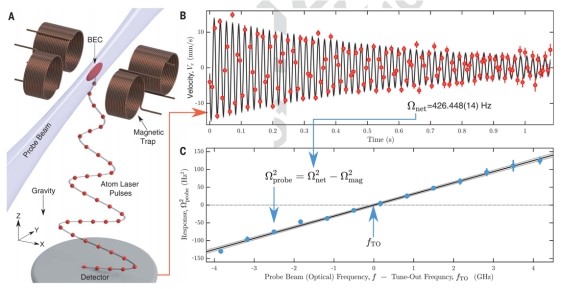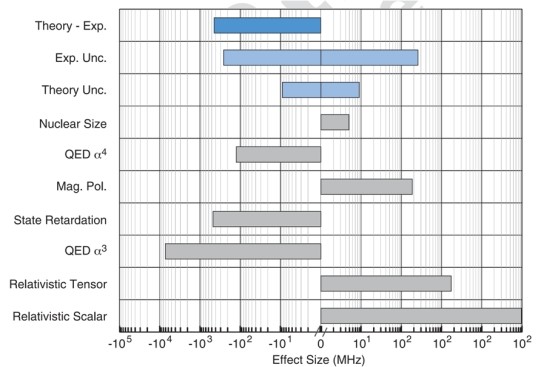In cooperation with researchers from the Australian National University (ANU) and the University of Windsor in Canada, researchers at the Innovation Academy for Precision Measurement Science and Technology (APM) of the Chinese Academy of Sciences have determined the 413-nm tune-out wavelength of helium with high precision both in theory and experiment, which opens up a new way to test quantum electrodynamics (QED) theory by measuring precisely the tune-out wavelength of "invisible" helium atom.
QED is a fundamental physical theory to describe the electromagnetic interaction between matter and light. It is the cornerstone of the development of modern physics. Testing QED theory helps to search for new physics beyond the standard model. Therefore, physicists have never stopped to test QED theory since it was put forward in the late 1940s, for example, precision measurements of the electron magnetic-moment anomaly and the atomic spectroscopy of hydrogen and helium.
Different from the traditional spectrum measurement method to test the QED theory, this work employed the tune-out wavelength of "invisible" atom to test it. The tune-out wavelength was defined as when the laser wavelength is modulated to a specific frequency, the Stark shift of a single energy level is zero, and the atom is like invisible in the laser field.
The international cooperation team adopted a new method to measure the optical dipole potential by changing the spatial oscillation frequency of the Bose-Einstein-Condensation (BEC) of helium atoms in the magnetic trap. At the same time, combined with high-accuracy atomic structure calculation, they realized a new test of QED theory at the level of one part in ten million.
The new scheme of testing atomic QED theory by using the tune-out wavelength was put forward firstly by Prof. James Mitroy of Charles Darwin University and Dr. TANG Liyan of APM (the former Wuhan Institute of Physics and Mathematics) in 2013. In 2015, the experimental group of Prof. Kenneth Baldwin at ANU measured the tune-out wavelength of helium with a precision of 5 ppm (~ 10-6). There was a 134-ppm discrepancy between the measurement and the theoretical prediction at that time.
In order to resolve this discrepancy, the theoretical team of APM independently developed a series of high-accuracy calculation methods and determined the tune-out wavelength with an accuracy of 0.1 ppm, which have promoted a new round of international cooperation.
The deepen cooperation between theory and measurement has been continued since 2019. The experimental team have developed the most sensitive method ever for measuring the potential energy of an atom (within a hundredth of a decillionth of a joule - or 10-35 joule), and used it to realize the measurement of the tune-out wavelength for the "invisible" helium atom with an precision of 0.35 ppm, which is a 20-fold improvement in the precision over the sole previous measurement in 2015.
The theoretical team formed by APM and the University of Windsor, Canada improved the state-of-the-art calculation of the tune-out wavelength by accounting for the finite wavelength retardation effect and the magnetic susceptibility accurately, and determined the tune-out frequency with an accuracy of one part in a hundred million (10 ppb ~ 10-9). The comparisons between theory and experiment have verified the sensitivity of the tune-out wavelength to the QED and retardation effects, which also provides a corroboration of the theoretical prediction put forward firstly by Mitroy and TANG.
In the future, the measured precision of the tune-out wavelength is expected to be improved to a level of 30 ppb and will be used to probe atomic nuclear information, which would open a new research window for exploring atomic nuclear properties from the perspective of "invisible" atoms.
This work was supported by the National Key Research and Development Program of China, the Strategic Priority Research Program of CAS, and the National Natural Science Foundation.








